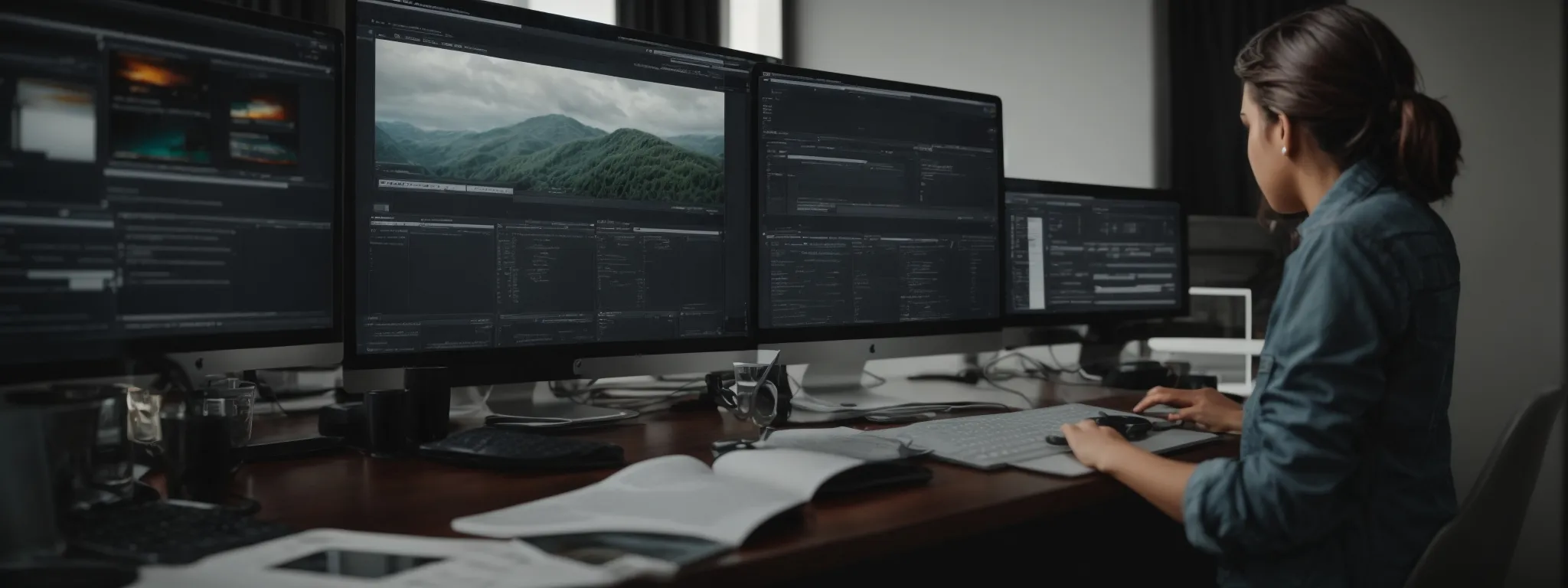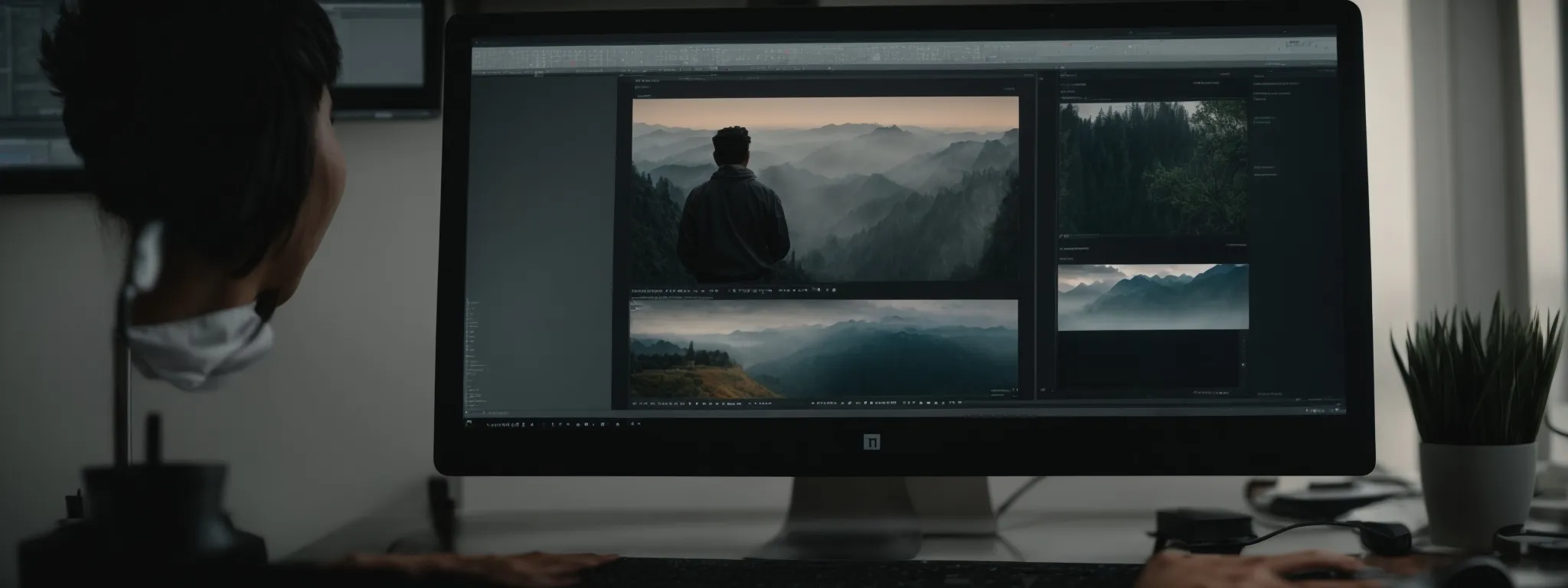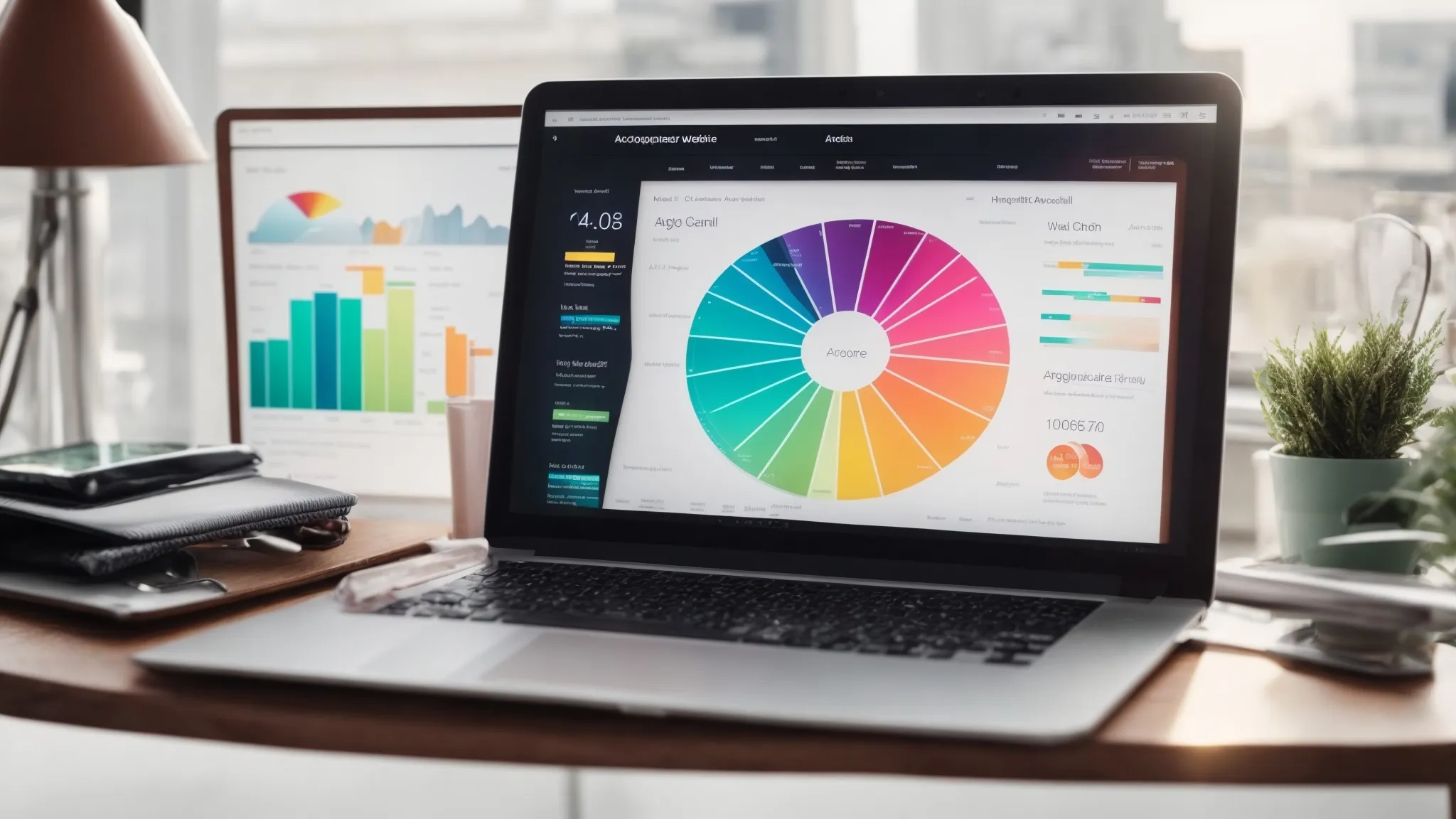Image SEO Best Practices
Optimizing Your Visuals: Image SEO Best Practices In the ever-evolving digital landscape, the significance of visual elements on websites is paramount, not only for captivating user interest […]
Optimizing Your Visuals: Image SEO Best Practices
In the ever-evolving digital landscape, the significance of visual elements on websites is paramount, not only for captivating user interest but also for bolstering search engine rankings.
Overlooking the importance of image SEO can result in missed opportunities to enhance visibility and drive traffic.
With the correct image format, refined compression techniques, and thorough tagging practices, businesses can ensure that their visuals are not only eye-catching but also fully optimized for search engine crawlers.
Keep reading to discover key strategies that LinkGraph’s SEO services employ to elevate images from mere decorative elements to powerful components of a comprehensive SEO arsenal.
Key Takeaways
- Choosing the Right Image File Type Is Crucial for SEO and User Experience
- Next-Generation Formats Like WebP Offer Superior Compression and Quality
- Descriptive File Names and Alt Tags Are Key for Image SEO Success
- Image Sitemaps Boost Visual Content Discoverability for Search Engines
- Responsive Image Techniques Are Essential for Engaging Mobile Users
Start With Selecting the Right Image Format

The initial step in optimizing images for the web hinges on choosing the ideal file type.
A multiplicity of formats exists, each with distinct advantages, designed to suit various digital scenarios.
The task for website owners is not just to compare common file types such as JPEG, PNG, and GIF, but also to judiciously select the most fitting format that aligns with their specific requirements.
With user experience and page load times at stake, the deliberation extends to embracing next-generation formats like WebP, which offer enhanced compression without sacrificing quality.
Selecting the right image file format is a foundational decision that impacts visibility in search results and overall site performance.
Compare Common File Types for Web Use
When elevating a site’s visual dimension, discerning the nuances among JPEG, PNG, and GIF files becomes indispensable. JPEGs reign supreme in balancing quality and file size for photographs, whereas PNGs prevail in presenting images with transparent backgrounds or intricate details without quality loss.
On the other hand, the avant-garde WebP format, championed by Google, is gaining traction due to its superior compression algorithms that significantly reduce file sizes while preserving fidelity, making it a compelling choice for optimizing site speed and enhancing user engagement.
Determine the Appropriate Format Based on Your Needs
The crux of choosing the correct image file type extends far beyond mere aesthetics; it is essential for maintaining a brisk website and offering a stellar user experience. A site’s purpose and the nature of its content will directly influence the selection: Does the site rely heavily on photography, or does it feature graphics that require transparency?
- For vivid photography, the JPEG format may be preferred for its balance of high quality and lower file size.
- Websites with design elements like logos that need clear backgrounds would benefit more from PNG files.
- Alternatively, WebP is adept at serving both scenarios with its exceptional ability to compress images without perceptible loss to image integrity.
When optimized correctly, an image transcends decoration to become a utility: it engages the user, facilitates loading times, and contributes positively to search engine rankings. Consequently, the decision of format is not just about visible clarity but also about how it reinforces the site’s functional aims and enhances the overall browsing experience.
Consider Next-Gen Formats for Better Compression
In today’s rapidly changing digital landscape, embracing next-gen formats such as WebP is not merely an option but a strategic imperative: these formats are tailored to excel in today’s internet ecosystem. Their superior compression technology ensures that large, quality images no longer have to weigh down a website’s performance – an essential consideration for mobile users who expect quick load times.
| Format | Advantages | Use Case |
|---|---|---|
| WebP | Superior compression, high-quality results | Photography heavy sites, ecommerce product images |
| JPEG | Good balance of quality and file size | General photography, image-rich blogs |
| PNG | Transparency support, lossless detail | Graphics with clear backgrounds, design elements |
When the focus turns to functionality, adopting next-gen image formats becomes a cornerstone of an effective SEO strategy. The cutting-edge compression offered by these formats ensures that site speed remains high, which in turn boosts search engine rank and user satisfaction, solidifying the relationship between optimized visuals and the flourishing of an online presence.
Master the Art of Image Compression

As digital professionals refine their strategies to conquer search engine rankings, image optimization emerges as a not-to-be-overlooked SEO facet.
Engaging visuals not only captivate readers but also serve as an influential SEO factor, directly impacting site speed and user experience.
Effective image compression is a delicate art that requires a keen understanding of available tools and the ability to maintain a harmony between image quality and file size.
Utilization of compression in a tactful manner can be made effortless through the integration of sophisticated plugins or scripts, offering a seamless route to optimize a website’s visual content.
Discover Tools for Effective Image Compression
Industry professionals leverage a suite of tools to adeptly compress images, ensuring optimal loading speeds without degrading visual fidelity. Among these tools are specialized image optimizers and plugins like Imagify, which integrate directly into content management systems to streamline the compression process.
Advanced optimization tools offer versatility by supporting various file types, allowing site owners to compress JPEGs and PNGs alongside next-generation WebP images. This holistic approach to compression plays a pivotal role in ensuring images are primed for both user interaction and search engine crawlers:
- Supporting a broad spectrum of file types caters to diverse web design needs.
- Automation features in optimization tools enhance workflow efficiency for marketers.
- Optimization tools enable adherence to image SEO best practices with minimal overhead.
Balance Image Quality With File Size
For site owners and digital creators, balancing image quality with file size is imperative to optimizing for both search engine visibility and user retention. A compromise between high-resolution images that speak volumes visually and compressed files that ensure swift page load times is critical for maintaining a competitive edge in the online space.
Utilizing intuitive compression algorithms and selective image file formats, Professionals at LinkGraph adeptly achieve this equilibrium. Their expertise ensures that every visual element on a client’s website contributes positively to the search engine ranking while preserving an immaculate user experience.
Automate Compression With Plugins or Scripts
To streamline the process of image optimization, professionals frequently rely on powerful plugins or scripts that automatically compress images upon upload. These tools are designed to work within content management systems, ensuring that every visual asset is optimized for the web without manual intervention.
The integration of such automation technologies into a website’s backend is essential for maintaining consistent image quality across all pages. The proficiency with which LinkGraph Implements These Compression Solutions reflects a deep commitment to optimizing the client’s online visual strategy.
| Tool | Function | Benefit |
|---|---|---|
| SEO Plugins | Automates image optimization | Consistent image quality, improved SEO |
| Scripts | Reduces manual compression tasks | Enhanced productivity, optimal user experience |
Enhance Discoverability With Image Tagging

In today’s digital era, the power images wield in search optimization cannot be overstated.
Adopting robust image SEO practices paves the way for increased visibility and allows a website’s visuals to be indexed more effectively by search engines.
Mastery in crafting descriptive alt tags, utilizing title tags prudently, and employing structured data to embellish search engine results pages (SERPs) elevates a website’s presence profoundly.
These strategies are not only vital for improving search engine rankings but also play a crucial role in making content accessible and comprehensible to all users, including those utilizing screen readers.
As such, a comprehensive approach to image tagging stands as an essential component in the arsenal of optimization tactics provided by SEO experts at LinkGraph.
Craft Descriptive Alt Tags for Search Engines and Accessibility
Crafting descriptive alt tags is a pivotal SEO task that serves a dual purpose, essentially ‘painting a picture’ for search engines and providing context for users who might be visually impaired. In the realm of search engine optimization, alt tags function as a textual alternative to images, allowing search engines to better understand the content, thereby enhancing the image’s discoverability in image search results.
LinkGraph places significant emphasis on the Strategic Use of Alt Attributes, ensuring they accurately describe the image content and incorporate relevant keywords where appropriate. This meticulous attention to detail not only bolsters the chances of a web page’s content ranking in search results but also greatly improves the accessibility of the content for individuals using assistive technologies such as screen readers.
Utilize Title Tags to Provide Additional Context
Title tags offer an additional layer of specificity to online imagery, furnishing extra context for both search engines and users. By judiciously applying title tags, LinkGraph ensures their clients’ images convey succinct, yet comprehensive descriptions when images are shared or hovered over, enhancing the user experience and SEO potential.
The strategic implementation of title tags by LinkGraph augments the informative value of images, thus facilitating a more thorough understanding for search engine crawlers. The precision in detail can lead to a marked improvement in image visibility on search result pages, solidifying a website’s visual elements as instrumental in its SEO success.
Employ Structured Data to Enhance SERP Display
Implementing structured data is synonymous with laying a foundation for richer search engine results page (SERP) display. The deployment of structured data by SEO professionals at LinkGraph enables search engines to not only index images more effectively but also to feature them prominently within image packs and visual carousels increasing visibility and click-through rates (CTRs).
LinkGraph takes advantage of structured data through the use of specific schema markup, enhancing the ability for search engine crawlers to parse image information and display it within an array of visual-focused search enhancements. This strategic decision bolsters the likelihood that images contribute substantially to the website’s overall discoverability and user engagement.
Employ Descriptive File Names for Better Indexing

In the quest to optimize every aspect of a website for better search engine visibility, the power of well-crafted image file names is often underestimated.
Proficiently incorporating target keywords into file names not only assists search engine crawlers in discerning image content, but it also fortifies the relevancy of the visual assets to the subject matter at hand.
For organizations meticulous in their SEO efforts, adherence to a systematic naming convention is indispensable, a practice which undeniably bolsters organizational efficiency and image indexation.
Conversely, reliance on generic or sequentially numbered filenames stands as a missed opportunity, depriving images of their potential to influence search rankings and user experience positively.
The guidance and implementation of these pivotal SEO strategies reflect the comprehensive services offered by LinkGraph, ensuring their clients’ visuals attain maximum search engine traction.
Incorporate Target Keywords in Image File Names
In the meticulous realm of optimizing visuals for search engines, incorporating target keywords into image file names is a shrewd practice that bolsters indexation and relevancy. LinkGraph harnesses this tactic to seamlessly weave pertinent keywords into the file names, ensuring each image is finely tuned to enhance its alignment with the content’s core topics, and thus, augmenting its visibility in search engine rankings.
LinkGraph’s Mastery of Image SEO extends to the strategic curation of file names, which, when infused with targeted keywords, serve as a beacon for search engine crawlers. This practice is a cornerstone in the optimization toolkit, allowing for precision in how digital assets contribute to the overarching goal of boosting a site’s search engine performance.
Follow a Consistent Naming Convention for Organization
Adhering to a consistent naming convention is not just about maintaining order; it is an invaluable practice for bolstering the efficacy of image indexation by search engines. At LinkGraph, industry professionals recognize the nuance that a logical and systematic approach to filename creation brings to enhancing SEO, ensuring that search engine crawlers can more efficiently understand and rank website images.
The organization achieved through a structured naming mechanism transcends mere user convenience, facilitating LinkGraph’s diligent SEO process as it fortifies image relevancy. This methodical system of naming, expertly employed by LinkGraph, plays a crucial role in refining a website’s visual narrative, directly contributing to improved search engine visibility.
Avoid Using Generic or Numbered Filenames for Images
The efficacy with which images improve a website’s SEO can be significantly stunted by the use of non-descriptive or sequentially numbered filenames. By resorting to generic labeling, such as “image1.jpg” or “photoA.png”, website owners inadvertently mask the content from search engines that prioritize meaning and context, thus impairing the image’s ability to enhance search engine results.
LinkGraph’s SEO services confront this common oversight by replacing ambiguous filenames with descriptive, keyword-rich alternatives that divulge the essence of the image. This strategic move not only elevates the image’s relevance in the eyes of search engine crawlers but also enriches the user’s understanding of the visual content, reinforcing the symbiotic relationship between SEO and user experience.
Integrate Images Into Sitemaps for Improved Indexation

In the intricate dance of digital optimization, the often-overlooked sitemap plays a pivotal role, acting as a direct line of communication with search engines.
It is vital for site owners to understand the importance of an image sitemap—a specialized XML sitemap for images—which ensures all visual content is noticed and indexed accurately.
This integration facilitates search engines’ ability to crawl, comprehend, and display images in relevant search queries.
As distinctive elements of SEO strategy, learning to build an image sitemap, recognizing the advantages of its submission, and maintaining its freshness with updates are core processes that can elevate a brand’s visibility and enhance the user experience.
Learn to Build an Image Sitemap
To master the craft of image sitemap construction, professionals must first comprehend the mechanics behind this SEO tool. An image sitemap is an XML document which serves as a roadmap, guiding search engines through all the visual content that a website has to offer, ensuring each image is indexed and appropriately classified.
Developing an effective image sitemap requires meticulous attention to detail, as it should enumerate URLs of the images, pinpoint their location on the website, and provide necessary metadata, such as captions, image titles, and associated content URLs. This methodical approach empowers search engines to efficiently crawl and index imagery, bolstering the site’s visibility in image search results.
| Element | Description | Purpose |
|---|---|---|
| Image URL | Location of the image file | Enables search engines to find the image |
| Page URL | Web page on which the image is displayed | Associates the image with relevant content |
| Metadata | Captions, titles, and alt text information | Provides context and assists in ranking |
Identify the Benefits of Submitting Image Sitemaps to Search Engines
Submitting image sitemaps to search engines stands as a decisive step for website owners aiming to enhance their online presence. It propels the visibility of a site’s imagery, ensuring that search engines such as Google can more efficiently crawl, index, and display images in relevant search queries, thereby multiplying the avenues through which a site can be discovered.
The inclusion of an image sitemap within a website’s SEO infrastructure denotes a pronounced increase in the opportunities for images to appear across various image search features. This strategic move heightens the chances for greater traffic influx, which subsequently can lead to improved click-through rates and heightened user engagement:
| Benefit | Impact on SEO | Resulting Advantage |
|---|---|---|
| Efficient Crawling and Indexing | Enhances discoverability of images | Increased image visibility in search results |
| Elevated Traffic Opportunities | Images surface in diverse search features | Growth in click-through rates and user interaction |
By optimizing their visual content through the submission of image sitemaps, brands fortify their online identity while simultaneously contributing to a superior digital experience for their audience. This nuanced aspect of SEO underscores the meticulous approach that LinkGraph takes in its Comprehensive Suite of SEO Services, ensuring every detail is addressed to amplify a site’s search engine optimization success.
Update Your Sitemap Regularly With New Visuals
Maintaining a current and accurate image sitemap is essential for ensuring that new visuals are promptly indexed by search engines, which in turn, fortifies the visibility of a website’s latest content. As such, LinkGraph’s SEO experts recommend the regular updating of image sitemaps, incorporating fresh visuals that mirror the evolving narrative of the site’s offerings.
LinkGraph’s rigorous approach to SEO underscores the value of routine sitemap submissions that reflect recently added images, enabling search engines to swiftly locate and index new visual assets. This practice is paramount for keeping a website’s visual discovery on pace with its content strategy, ensuring that all imagery remains an integral part of the optimization process.
Ensure Your Visuals Are Mobile-Friendly and Responsive

As digital landscapes evolve, so too must the approach to image optimization, particularly with the ubiquitous use of mobile devices.
Today’s websites are accessed across a spectrum of screens, from the expansive monitors of desktop PCs to the compact displays of smartphones.
Ensuring images are not only mobile-friendly but also responsive to varying screen sizes is not merely an enhancement; it’s an imperative for seamless user experience and search engine receptivity.
To provide users with optimal interaction and viewing on any device, webmasters must employ responsive image techniques, rigorously test image display across multiple devices, and meticulously optimize touch elements for images that call for user interaction.
Implement Responsive Image Techniques for Various Screen Sizes
As the digital expanse burgeons, the imperatives of responsive web design surface with unprecedented urgency. Adapting visuals to accommodate customer engagement across devices, LinkGraph’s professionals embrace fluid image techniques that ensure images scale seamlessly to match screen sizes, from vast desktop displays to the compact windows of smartphones.
Cognizant of the myriad device dimensions that factor into a user’s online experience, LinkGraph employs the “ element and associated source sets to serve optimal image resolutions. This practice enriches user interface fluidity, guaranteeing that each image maintains its intended impact regardless of the viewing context:
| Technique | Usage | Outcome |
|---|---|---|
| Fluid Images | Images scale in relation to screen size | Consistency in visual quality and composition across devices |
| “ Element | Serves multiple image resolutions | Delivers the most appropriate image version for every screen scenario |
Through the astute incorporation of CSS media queries, LinkGraph’s team ensures images do not become pixelated or distorted on varying displays. These responsive design strategies are the bedrock upon which user-centric and SEO-friendly websites are developed, epitomizing a harmonious blend of form and function to enhance the overall browsing experience.
Test Image Display on Multiple Devices
Rigorous testing of image display across various devices constitutes a crucial phase in the deployment of visual content. LinkGraph’s meticulous process includes the verification of images on different devices to ensure clarity, scale, and interactive elements are consistent and functional, positing a user experience of the highest order.
LinkGraph champions a thorough validation regimen, utilizing an array of devices to ascertain that visual elements resonate effectively with users, regardless of their access point. This careful scrutiny aligns with their commitment to delivering responsive, accessible, and SEO-optimized websites that cater to the dynamic needs of the contemporary digital audience.
Optimize Touch Elements for Interactable Images
In an ecosystem where user interaction informs success metrics, the optimization of touch elements for images requiring user action is critical. LinkGraph recognizes the significance of this detail, ensuring that all interactable visuals respond with precision to touch commands across all devices, thus enhancing user engagement and contributing to the efficacy of the SEO strategy.
The team at LinkGraph diligently refines touch-target sizes and interaction cues, creating an intuitive navigation environment for tactile users. This level of sophistication in image SEO is a testament to their commitment to an optimal web experience, ensuring that every tap or swipe by users on mobile devices contributes to the seamless utility of the visual elements.
Conclusion
Optimizing images for SEO is a crucial practice that significantly impacts a website’s performance and user engagement.
Selecting the correct image file format, such as JPEG for photography, PNG for transparent details, or the increasingly popular and highly compressible WebP, lays the foundation for a fast-loading and visually pleasing website.
Employing tools and plugins to effectively compress these images ensures that they maintain quality while reducing page load times, a key factor for both user experience and SEO.
Furthermore, image SEO extends to thoughtful naming of files with target keywords, crafting descriptive alt and title tags, and integrating images into sitemaps to improve indexation by search engines.
Additionally, ensuring images are mobile-friendly and responsive across various devices enhances accessibility and ensures users have a consistent visual experience, which in turn, supports a site’s SEO objectives.
By prioritizing image SEO best practices, professionals can unlock a deeper level of optimization that not only improves search engine rankings but also enriches the overall user experience.
Through detailed attention to these practices, a site not only enhances its aesthetic appeal but also strengthens its online presence and discoverability.















































































